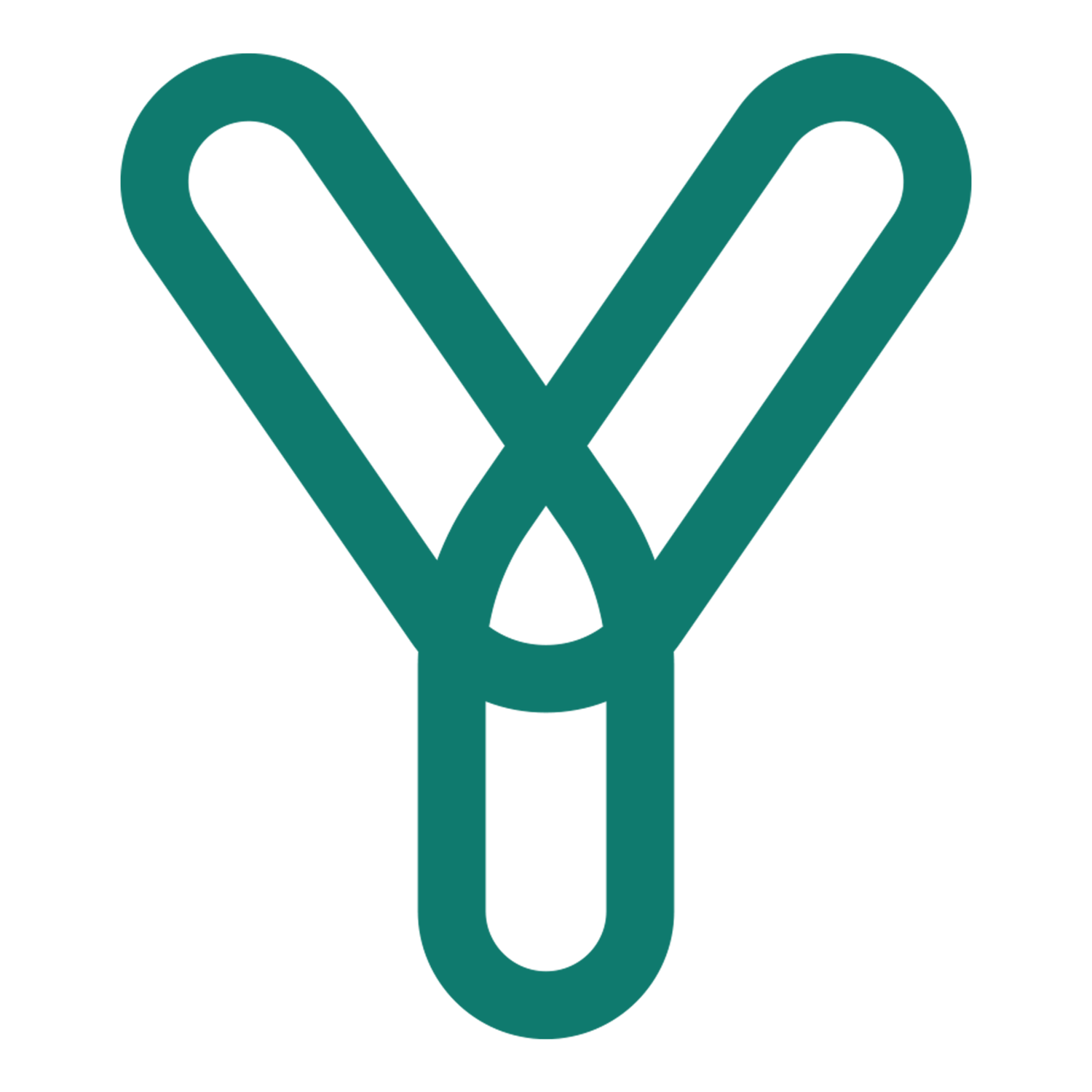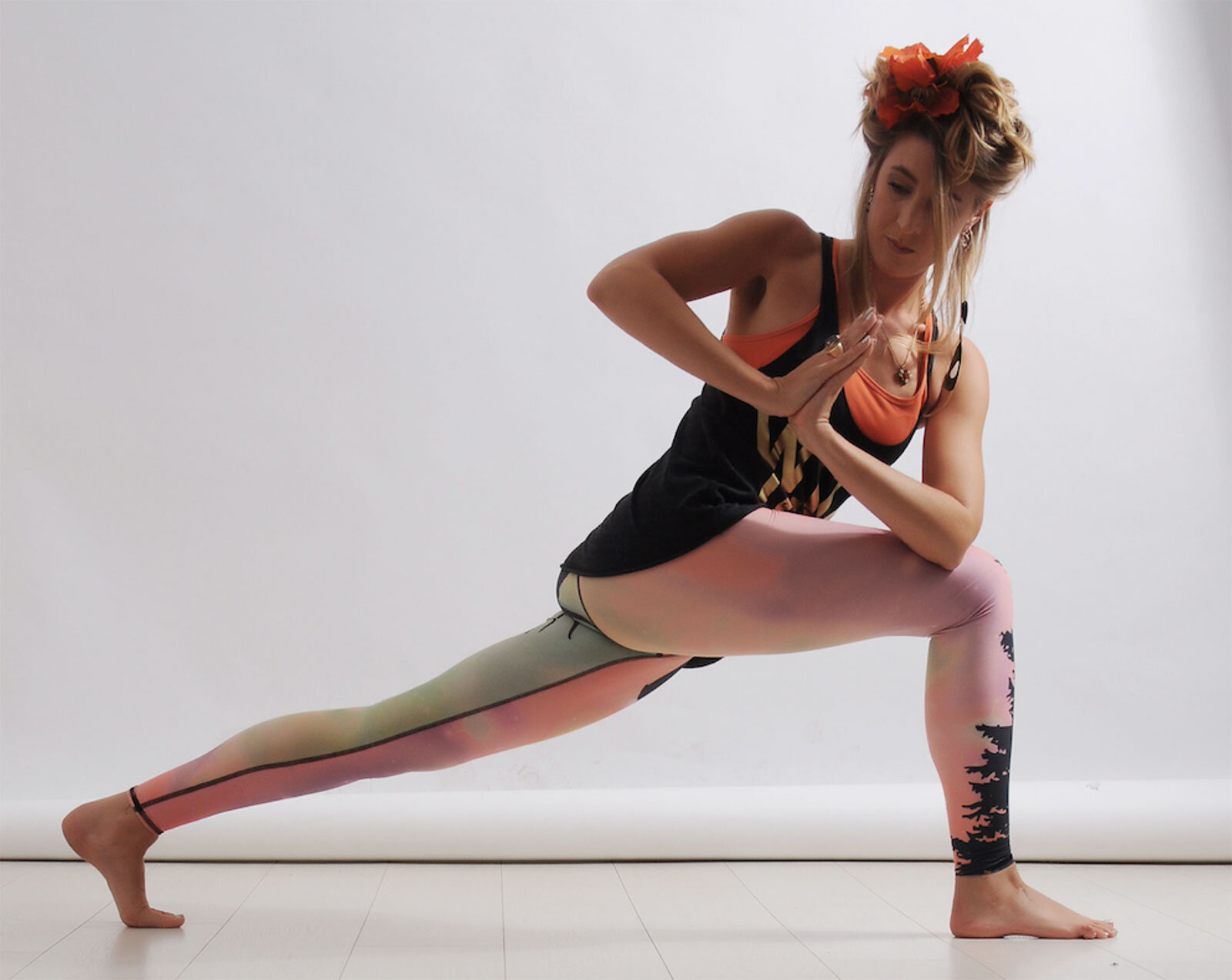Revolved Crescent Lunge: Parivrtta Anjaneyasana
Name: Revolved Crescent Lunge
Sanskrit: Parivrtta Anjaneyasana (par-ee-vrt-tah AHN-jah-ney AHS-anna)
Pose Intensity: Strong
Goal: Increase stamina and balance
Getting into the Pose:
1. Starting in High Lunge or High Lunge Crescent Variation with feet about hip distance apart.
Make sure the front knee is stacked over the heel at a 90 degree angle.
Engage the back leg by pulling up the kneecaps and squeezing the glutes.
2. Inhale to bring the hands to the hips to make sure the hips are square.
Slightly tilt the tailbone to engage the core and t protect the lower back.
As soon as you feel stable, bring the hands to heart in prayer pose
3. Exhale to gently twist towards the direction of the front leg. So if the right leg is the front bent leg, twist to the right. Press the hands firmly together.
4. Keeping a long spine, lean forwards slightly and hook the opposite elbow to the outside of the front knee. So if the right foot is forward, hook the left elbow to the outside of the right knee. Stay strong in the legs and hips and keep the chest open.
5. Push the palms together to engage the arms and to assist the twist deeper if you want it. Find depth with an exhale.
Hold this pose for 5 breaths keeping a long line in the spine to the crown.
Coming out of the Pose:
Unwind with an inhale, exhale to place both hands on the mat on both sides of the front foot. Inhale to bring arms back up to High Lunge
Variation:
The pose can be made more challenging by extending the left fingertips to the ground and the right fingers towards the ceiling (with the right foot forward). This is an advanced pose that strengthens the quads, the glutes and stretches the psoas and hips, and improves digestion.
To arrive into the variation, extend the hands to the floor and ceiling. The left hand is placed on the out edge of the right (front) foot. The gaze follows the right hand if it’s comfortable for the neck.
To come out, you can choose to place hands back into prayer pose first before untwisting as it gives you a more controlled unwinding experience.
Modifications:
If the pose is too strong today, lower the back knee to lessen the intensity of the pose and until you start to build up more balance. Once you feel safe and balanced with the knee lowered, then you can tuck the back toes and slowly lift the knee.
You can arrive at this pose straight from Low Lunge by following steps 2 onward.
If the hands don’t quite reach the ground in the more advanced variation, the support the bottom hand with a couple of blocks.
The 3 Top Tips
1. Squeeze the kneecap of the back leg to create a strong foundation
2. Make sure you can see your big toe over the front knee to make sure that the knee is aligned well with the ankle.
3. Stay light on the elbow. Try not to rely on the elbow to take the whole torso weight.
Benefits
Strengthens the quads and glutes and spine.
Stimulates the abdominal organs
Improves digestion
Improves balance and stability
May relieve sciatic pain
Cautions
Avoid this pose if you are pregnant, have high blood pressure. Proceed with caution if you have any injuries in the shoulders, spine, hips, knees or ankles.
This pose is as much about the strengthening of the legs and lengthening of the spine as the twist. Give your spine and waist time to adjust to deep twists and focus on aligning and stabilising the pose first.


